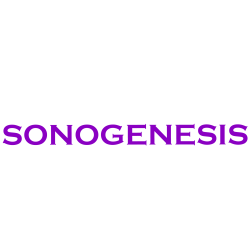Perception, as a key building block, is placing itself in the world around it. You will like it if I write that our senses are the portals to the Soul. This assertion is true to the point where we can start talking about what the Soul is… we prefer to leave this discussion without arguments with others. Let us return to the portals to the Soul, which are defined by time. The time that we measure in units, in beat, in rhythm, just as we have been taught at school in physics — we perceive time linearly. Let’s have a relaxing walk in Nature.

The walking trail leads us through the forest to the stream, which cut the riverbed between two slopes of the mountain…When I look at this stream from above, I see its linear water flow along the riverbed, and in the distance, the stream disappears from my field of vision. I know where I am, I know which river this stream flows into, it is clear that I also know which river this river flows into and at the end into which sea…on the map I sketch the linear path of the water of my stream. While reflecting by the stream, I am surprised by the rain, which begins to fall, I unconsciously do not even think that the circle is complete, the water returns to the stream at my feet through the rain… I know all this, but I do not give any meaning to this. The natural phenomenon of water circulation, which is not at all linear.
Let’s return to a time that is not linear in space, we are not aware of its circulation: the circle of the day, the circle of the year, the circle of life… The perception of time deceives us. We keep moving forward, claiming that we are just circling, spinning around in a circle. Do we experience time consciously?
This happens suddenly. Unconsciously. Each of us knows a time of distress and crisis when we are chasing our own shadow. I’d love to give a vivid description, but I’m sure I’d fail to do so. Is there anything else I can write down other than describing a feeling of entrapment in a circulation of the same pattern?
Maybe I’ll finish writing down what I should have done in the beginning. I will immediately explain the key realization, how the “autopilot therapy” was created — it is difficult to describe easily complex things. It is even more difficult to make complex processes simple — but this is not true at all. Let me elaborate on it. When we have no solution, or when we have no idea what the problem is, we immediately find an excuse that “this is a very complex matter.” Complexity means a bunch of information, most of which we do not know or do not have. That is the essence of our perception. When you extracted all the information from the data, when you got the spark, and when you added new knowledge and findings, the process just started. The moment the process starts, you realize that everything is very simple. Simple?
Very simple. In the beginning, all you know is the goal, and you have no idea of the path you’re going to take. You’re looking for shortcuts that turn out to be tiring long journeys. You bump into a wall, and you don’t see that the door is near, you walk around in a circle for a while and you don’t even notice that because you want to and you have to get to the goal. Do you really have to? Doesn’t this compulsion mean that you’re going around in circles?

I will not now write down the quotes of wise men and women who knew how to write and express vast amounts of knowledge simply. They simply succeeded because they fell in love with the problem — and this is the lever on which all the complex things in an instant pass into simplicity through pain and denial. Until now, I think I’ve said pretty much everything but the question “how?” is still hiding somewhere. Too often we ask ourselves how? instead of asking why? I set a trap for myself. If I immediately asked myself why this works in such a way, and why I have to solve this problem, I would have a much better chance of solving this problem.
Let’s think about it, you think about it yourself. It will not help you if you know how the brain works but know why it works. It works to solve problems. And that’s where the miracle happens when you realize that you fall in love with the problem. Everything is much easier from here on.
I keep promising something, but it’s going to be hard to reveal it, because you can’t describe in a few paragraphs a few years of walking around the circle. In the following articles, I will describe all the backgrounds of this love for the problem.
My wife has a damaged nervous system, stemming from her youth. This is her distress, which she has overcome with all the resistance and optimism all her life. She invests a lot of her hidden energy in therapies (official medicine wrote her off a long time ago). She explores and discovers different directions, and I have often stood by her side even though I am helpless. Over time she has built knowledge and experience into a stable process of progress — then a breakthrough happened a year and a half ago. I extracted a binaural sound from previous research and it was a coincidence that we (instinctively and also out of curiosity) bought a vest with tactile transducers that promised vibrations of 0–200 Hz… Knowledge of bio-resonance, new findings in neurology, a touch of psychology, and a pinch of bioacoustics were added to the process, and: what we now call SONOGENESIS was created.
And then I said, “That’s it!”
My wife looked at me with sparkling eyes and said, “NO! It’s MORE than that!”
I didn’t object.
What’s the point if both of us see the effects of this therapy? Let’s continue with this journey…
Yours Zlatko
P.S. Now you have probably asked yourselves how it works or why it works. The answer follows…next time…soon…



